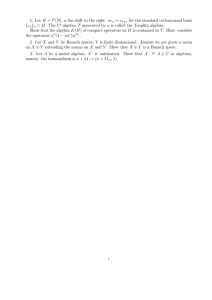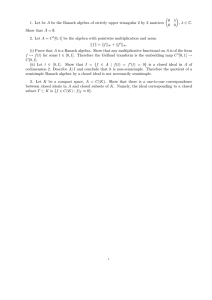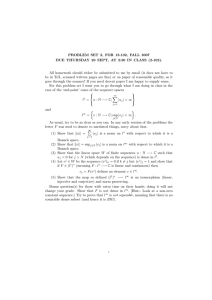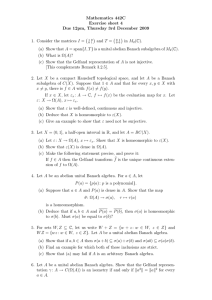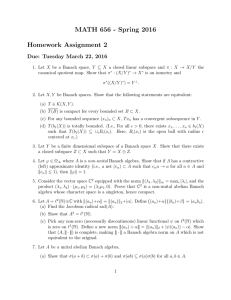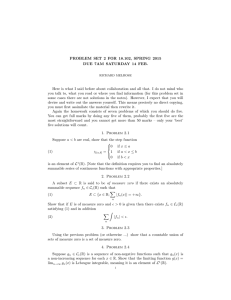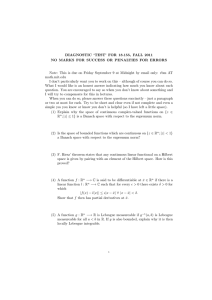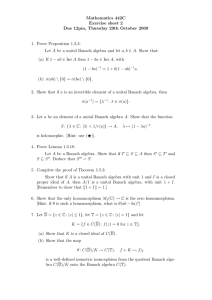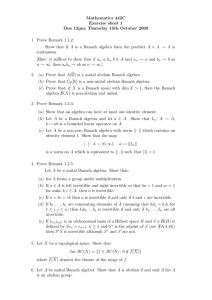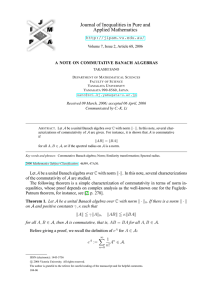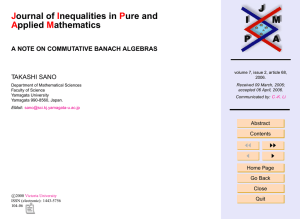MATH 656 - Spring 2016 Homework Assignment 1
advertisement
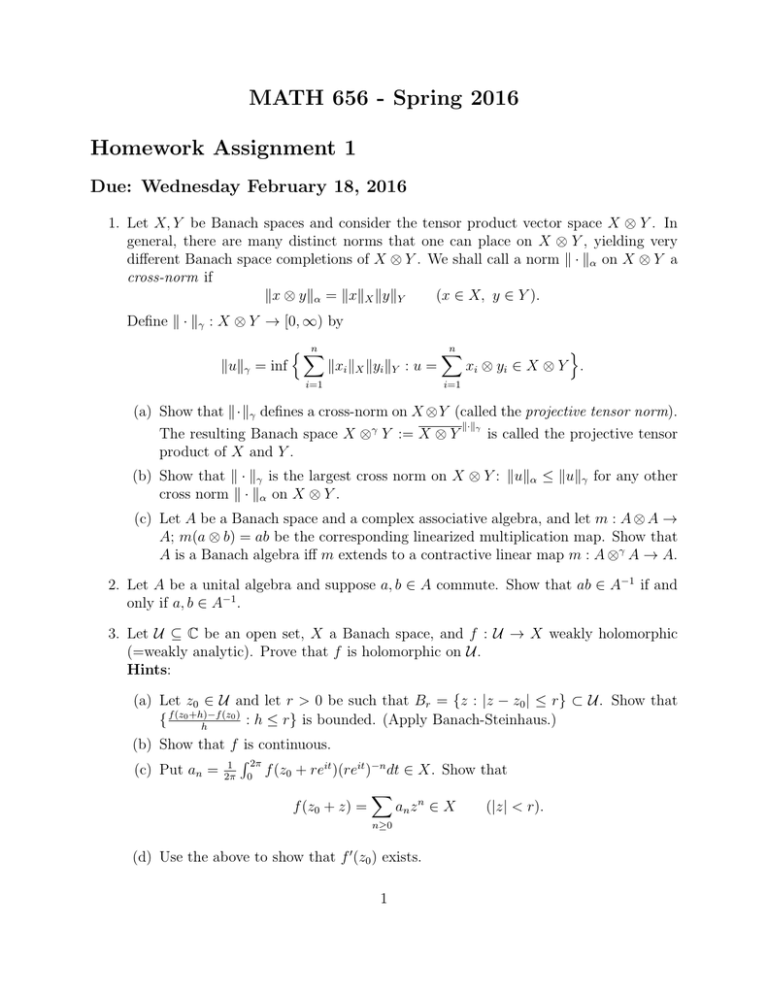
MATH 656 - Spring 2016
Homework Assignment 1
Due: Wednesday February 18, 2016
1. Let X, Y be Banach spaces and consider the tensor product vector space X ⊗ Y . In
general, there are many distinct norms that one can place on X ⊗ Y , yielding very
different Banach space completions of X ⊗ Y . We shall call a norm k · kα on X ⊗ Y a
cross-norm if
kx ⊗ ykα = kxkX kykY
(x ∈ X, y ∈ Y ).
Define k · kγ : X ⊗ Y → [0, ∞) by
kukγ = inf
n
nX
kxi kX kyi kY : u =
i=1
n
X
o
xi ⊗ y i ∈ X ⊗ Y .
i=1
(a) Show that k·kγ defines a cross-norm on X ⊗Y (called the projective tensor norm).
k·kγ
is called the projective tensor
The resulting Banach space X ⊗γ Y := X ⊗ Y
product of X and Y .
(b) Show that k · kγ is the largest cross norm on X ⊗ Y : kukα ≤ kukγ for any other
cross norm k · kα on X ⊗ Y .
(c) Let A be a Banach space and a complex associative algebra, and let m : A ⊗ A →
A; m(a ⊗ b) = ab be the corresponding linearized multiplication map. Show that
A is a Banach algebra iff m extends to a contractive linear map m : A ⊗γ A → A.
2. Let A be a unital algebra and suppose a, b ∈ A commute. Show that ab ∈ A−1 if and
only if a, b ∈ A−1 .
3. Let U ⊆ C be an open set, X a Banach space, and f : U → X weakly holomorphic
(=weakly analytic). Prove that f is holomorphic on U.
Hints:
(a) Let z0 ∈ U and let r > 0 be such that Br = {z : |z − z0 | ≤ r} ⊂ U. Show that
(z0 )
: h ≤ r} is bounded. (Apply Banach-Steinhaus.)
{ f (z0 +h)−f
h
(b) Show that f is continuous.
R 2π
1
(c) Put an = 2π
f (z0 + reit )(reit )−n dt ∈ X. Show that
0
X
f (z0 + z) =
an z n ∈ X
(|z| < r).
n≥0
(d) Use the above to show that f 0 (z0 ) exists.
1
4. Let A be a unital Banach algebra. Show that σ(ab) ∪ {0} = σ(ba) ∪ {0} for all a, b ∈ A.
(Hint: Show that for admissible λ ∈ C, (a(ba − λ)−1 b − 1)(ab − λ) = λ.)
5. Let (en )n≥0 be an orthonormal basis for a separable Hilbert space H and consider the
diagonal operator D ∈ B(H) given by
Den = dn en ,
where (dn )n is a bounded sequence of complex numbers. Determine σ(D), kDk, and
decribe the set of eigenvalues for D.
6. Let (en )n≥0 be an orthonormal basis for a separable Hilbert space H. Let an =
gcd(n, 2n )−1 for n ≥ 1 and define T ∈ B(H) by T en = an+1 en+1 . (T is an example of a weighted shift operator with weight sequence (an )n ).
n
(a) Find the spectral radius r(T ). (Hint: Calculate kT 2 k.)
(b) For λ ∈ T, define a unitary operator Uλ ∈ B(H) by Uλ en = λn en . Show that
λT = Uλ T Uλ−1 . What does this say about σ(T )?
(c) Define Tk ∈ B(H) by Tk en = an,k en+1 , where an,k = an+1 if an+1 ≥ 2−k and
an,k = 0 otherwise. Show that σ(Tk ) = {0} and that kT − Tk k = 2−k−1 .
(d) P
Show that σ(T ) is the disk of radius r(T ) centered at 0. (Hint: If (λ − T )−1 e0 =
n
n cn en , solve for cn in terms of λ and bn = kT e0 k. Use information about bn
from part (a).)
(e) Conclude that the spectrum and spectral radius are not continuous functions.
2
